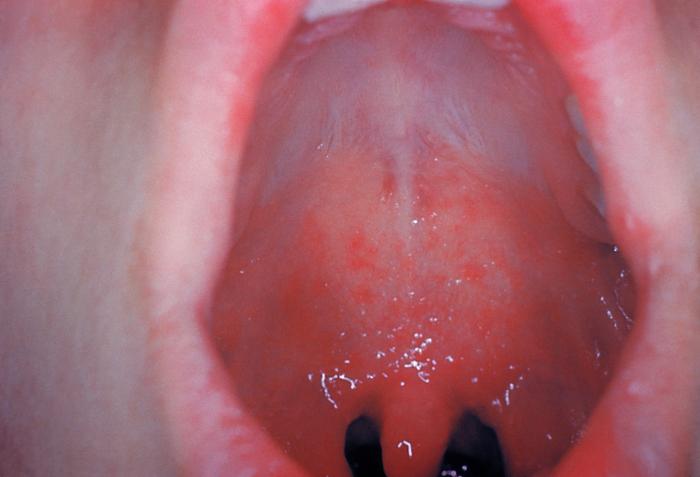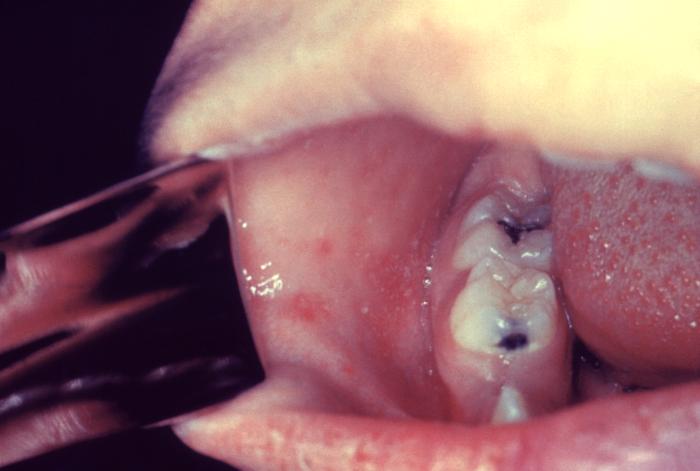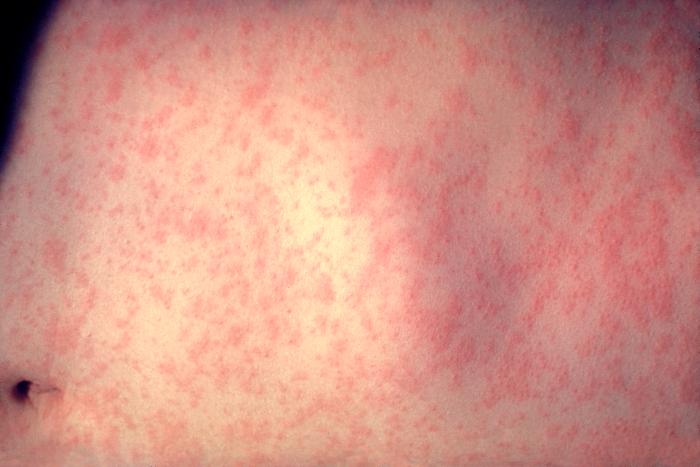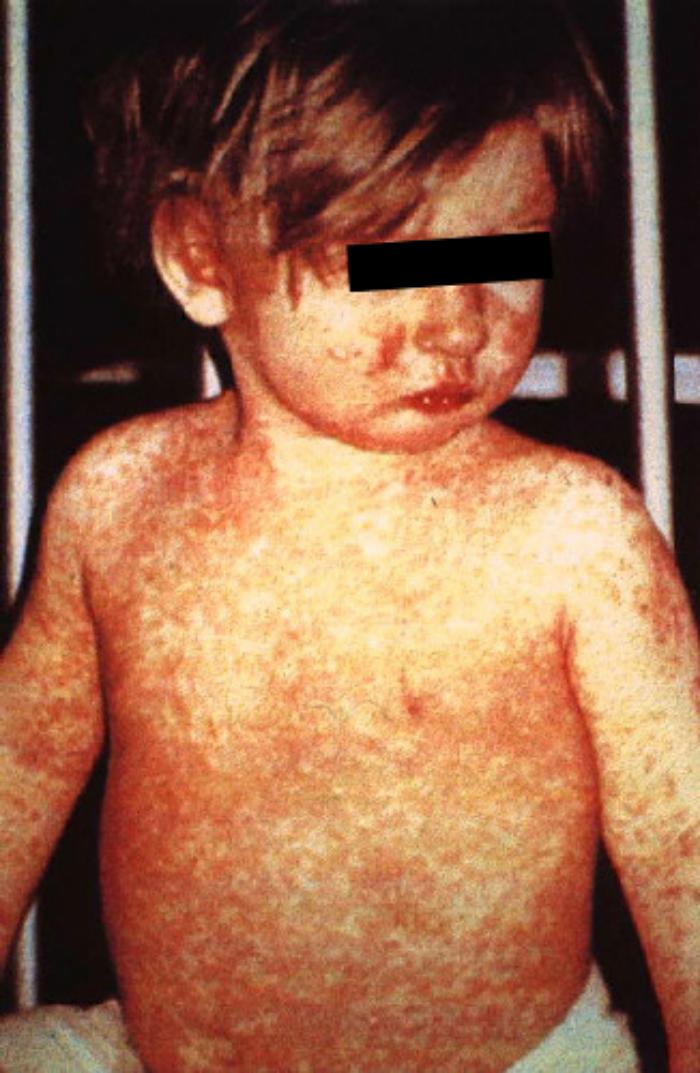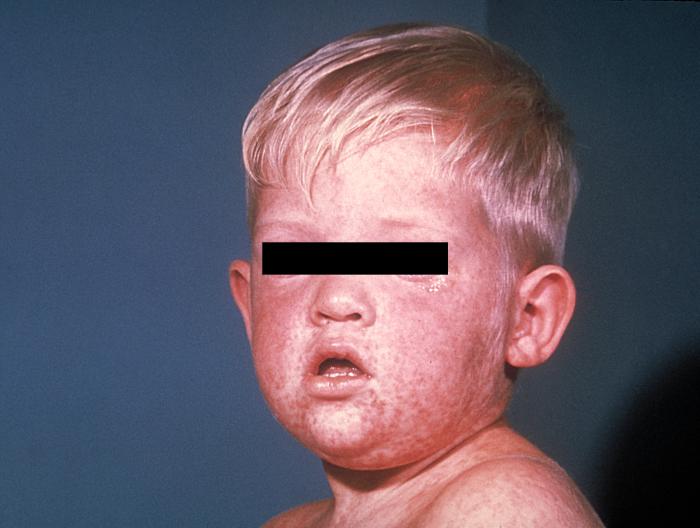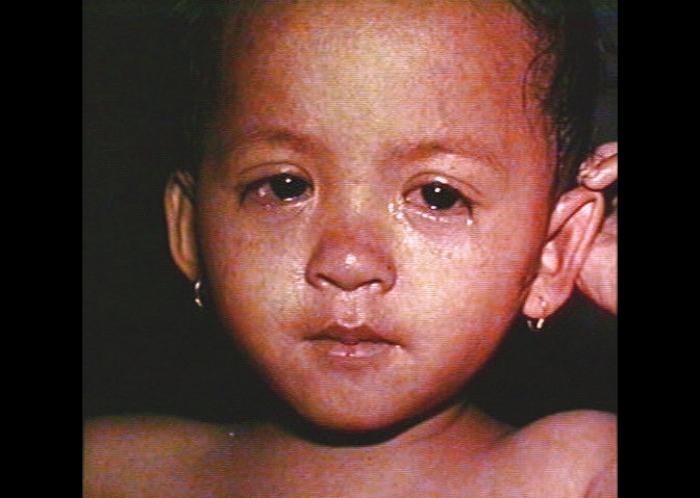Measles physical examination
|
Measles Microchapters |
|
Diagnosis |
|---|
|
Treatment |
|
Case Studies |
|
Measles physical examination On the Web |
|
American Roentgen Ray Society Images of Measles physical examination |
|
Risk calculators and risk factors for Measles physical examination |
Measles is a condition, that is best diagnosed clinically based on a constellation of signs and symptoms. On physical examination the following are pathognomic for measles:
- Koplik's spot - These are bluish gray spots on an erythematous base, opposite the base of second molars. These present usuaaly 2-3 days after initial prodrome and may or may not persist till the rash disappears. Although pathognomic, these are not present in all the cases. Its absence does not exclude the diagnosis of measles. Shown below are a couple of images depicting Koplik's spots.
-
Image showing bluish-grey spots on an erythematous base known as Koplik's spots
-
Image showing Koplik's spots opposite the base of second molars.
- Rash - Three to five days after the start of symptoms, a red or reddish-brown itchy rash appears. The rash usually begins on a person’s face at the hairline and spreads downward to the neck, trunk, arms, legs, and feet.It also regresses in the same manner as it appeared in about 5-7 days. The rash is blanching, maculopapular in nature to begin with but may coalesce later to become plaques and patches. When the rash appears, a person’s fever may spike to more than 104 degrees Fahrenheit. Shown below are images depicting the characteristic rash of measles:
-
Image showing measles rash on day 3.
-
Image showing characteristic day 4 appearance of measles rash.
-
Typical appearance of rash on day 3, measles.
- Conjunctivitis - Pink eye, is one of the 3 'C' 's in the classical 3 'C' presentation of measles (other 2 being cough and coryza). Shown below is an image illustrating pink eye in a child with measles:
-
Pink eye in a child with conjunctivitis
